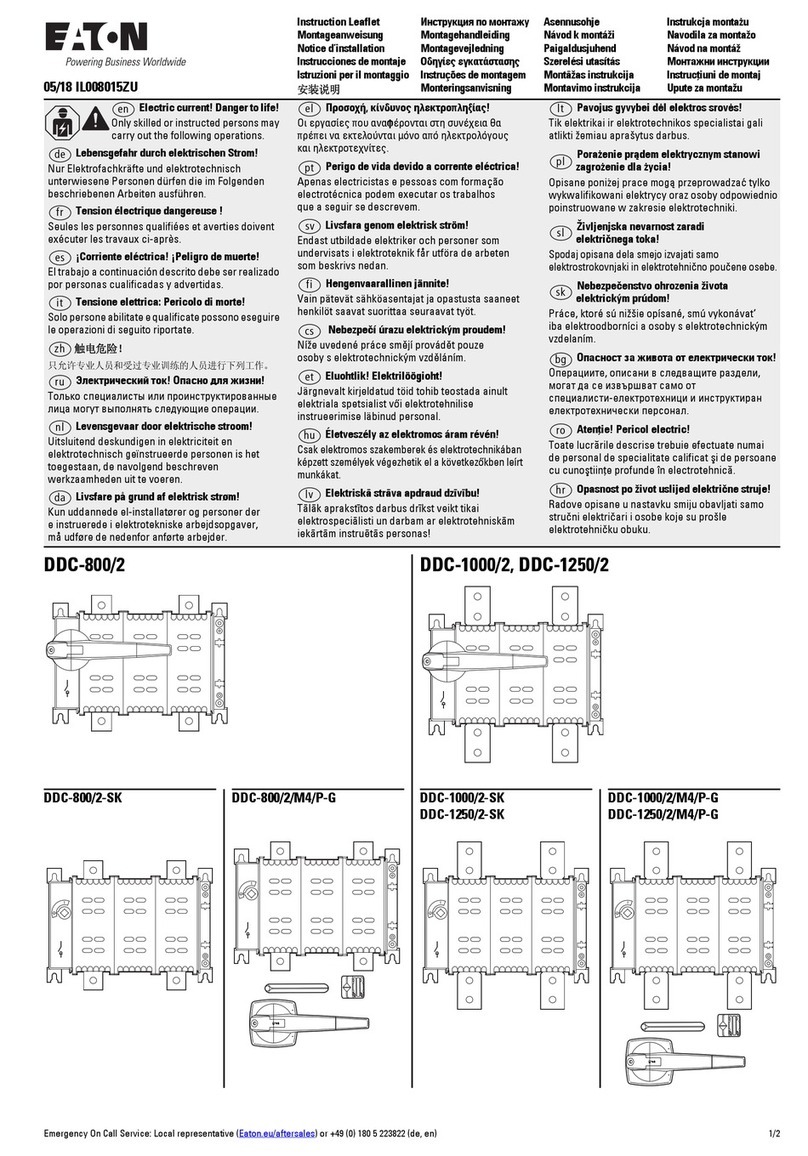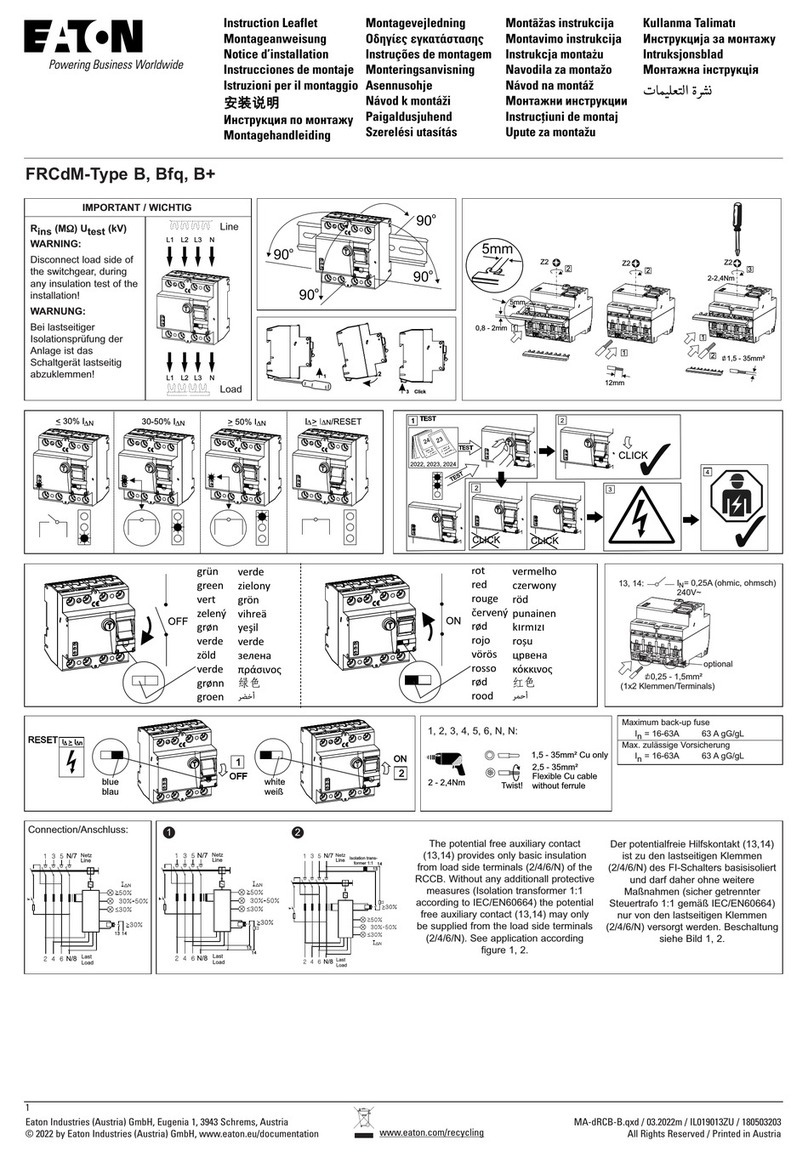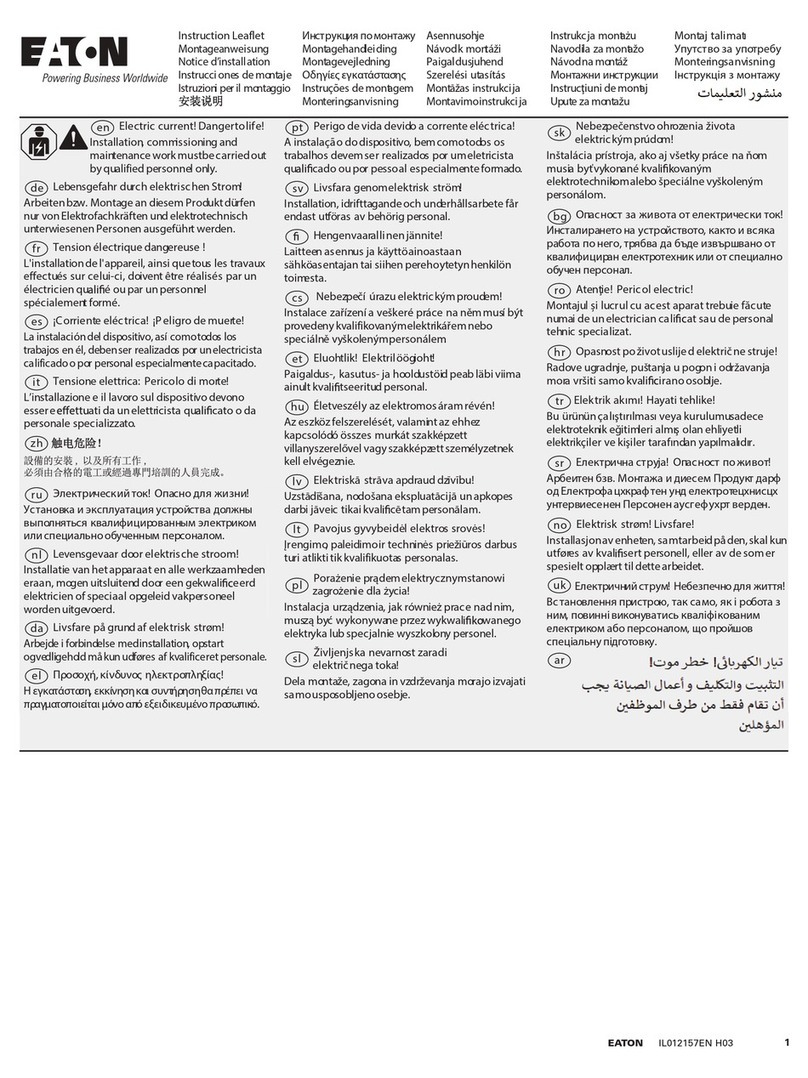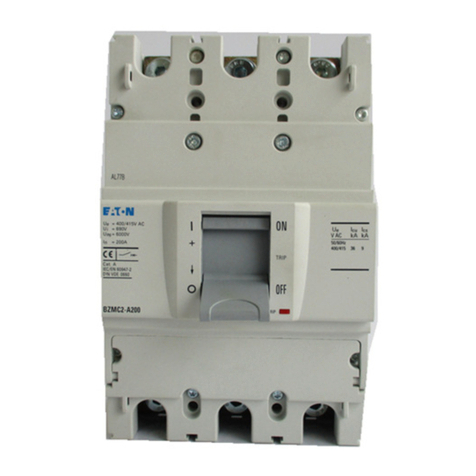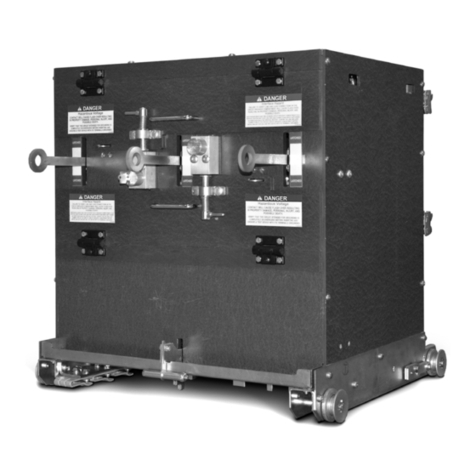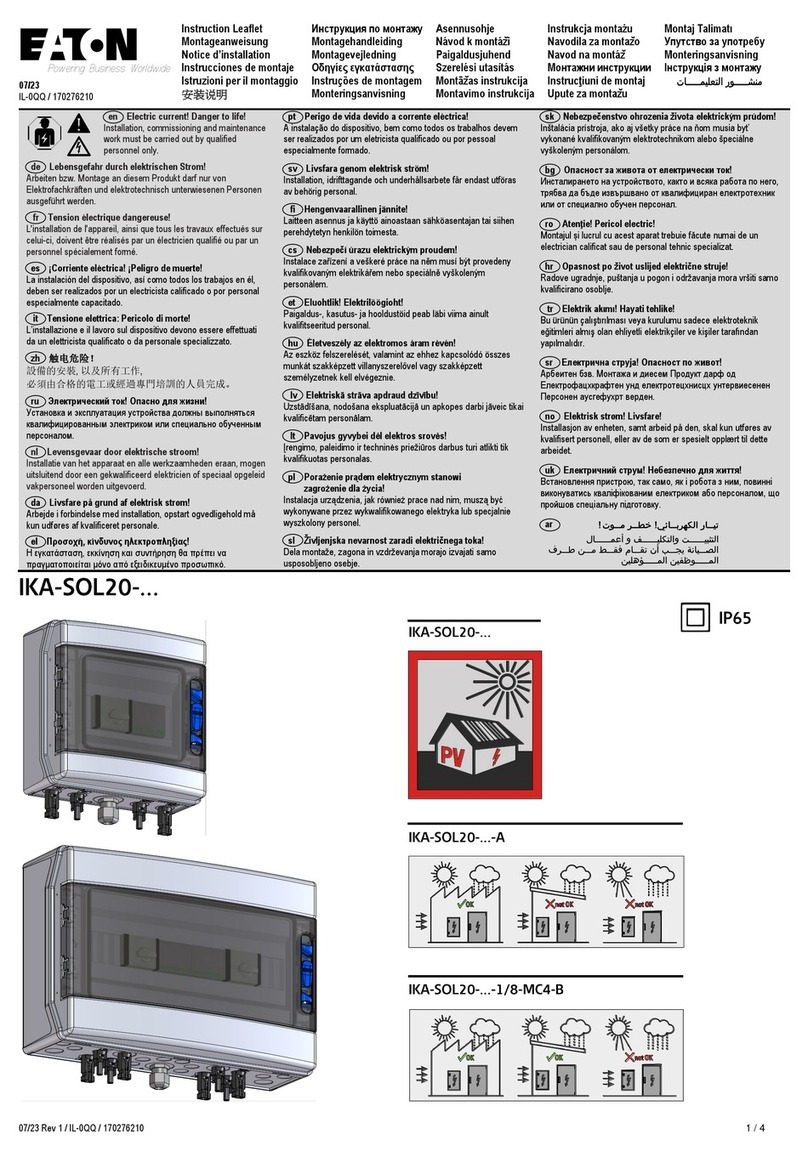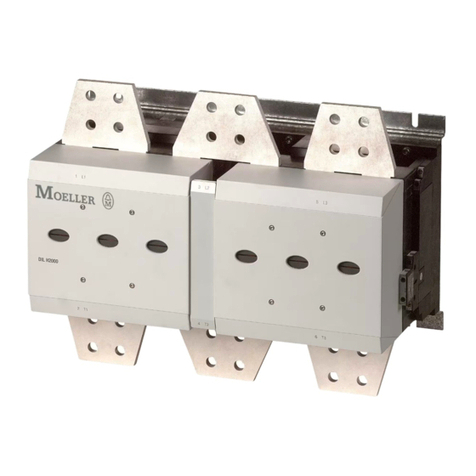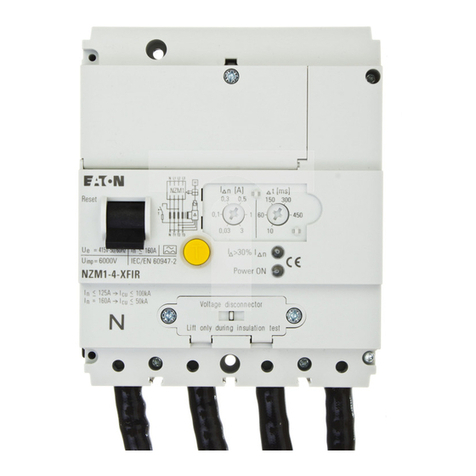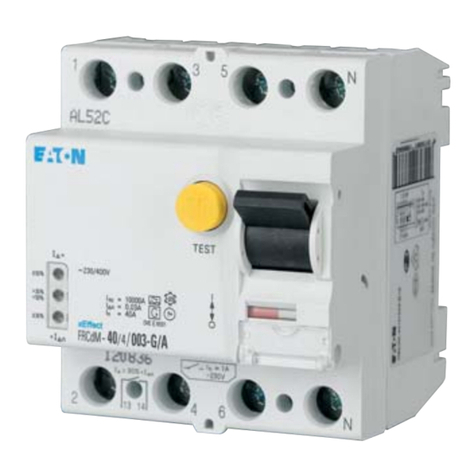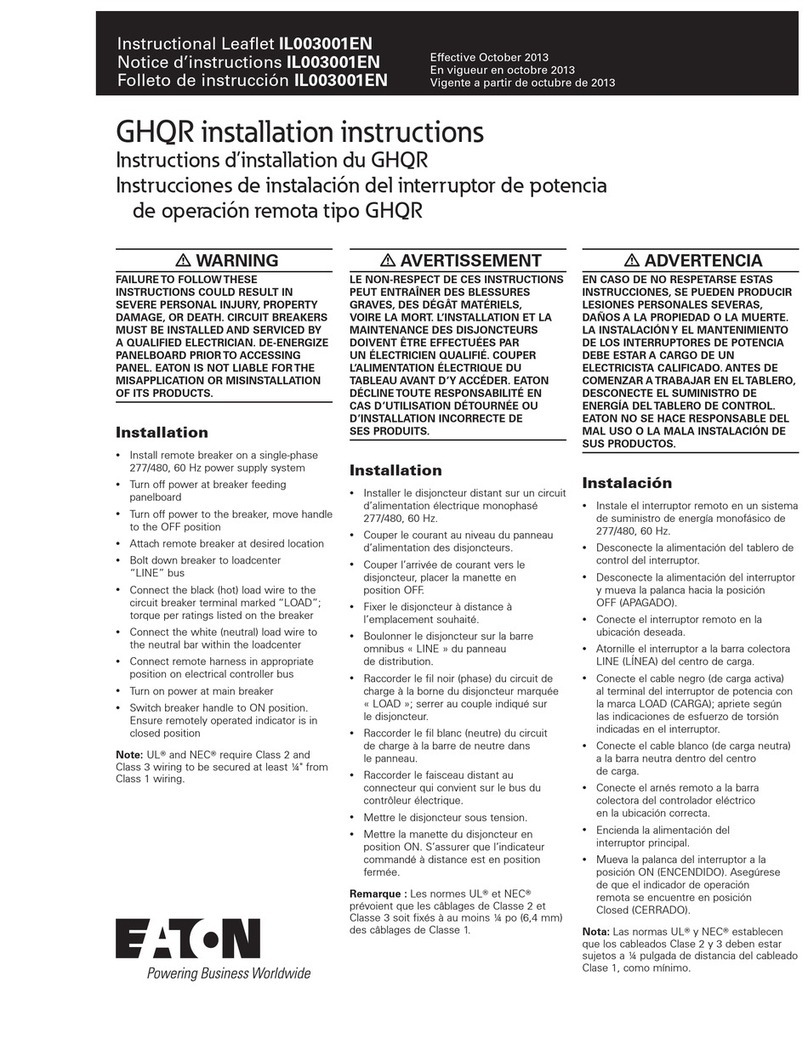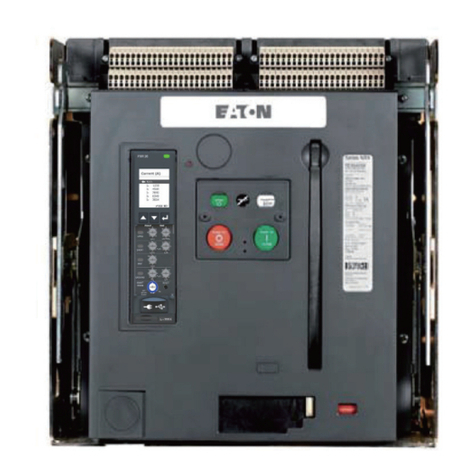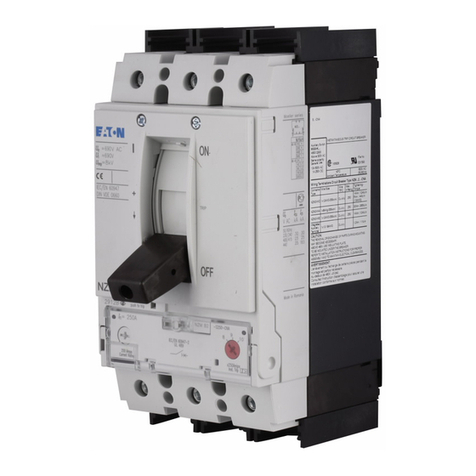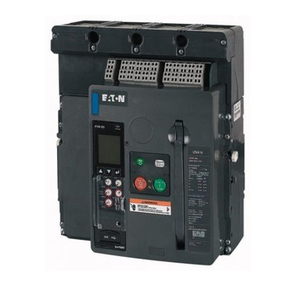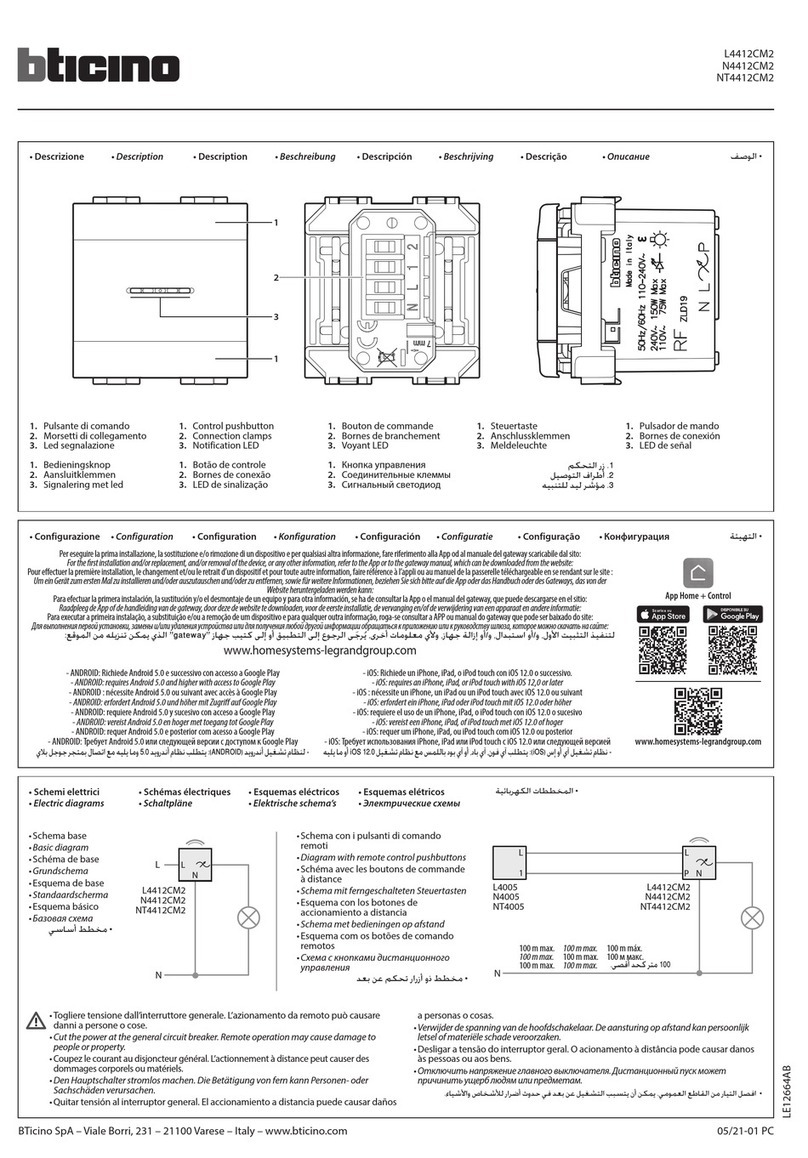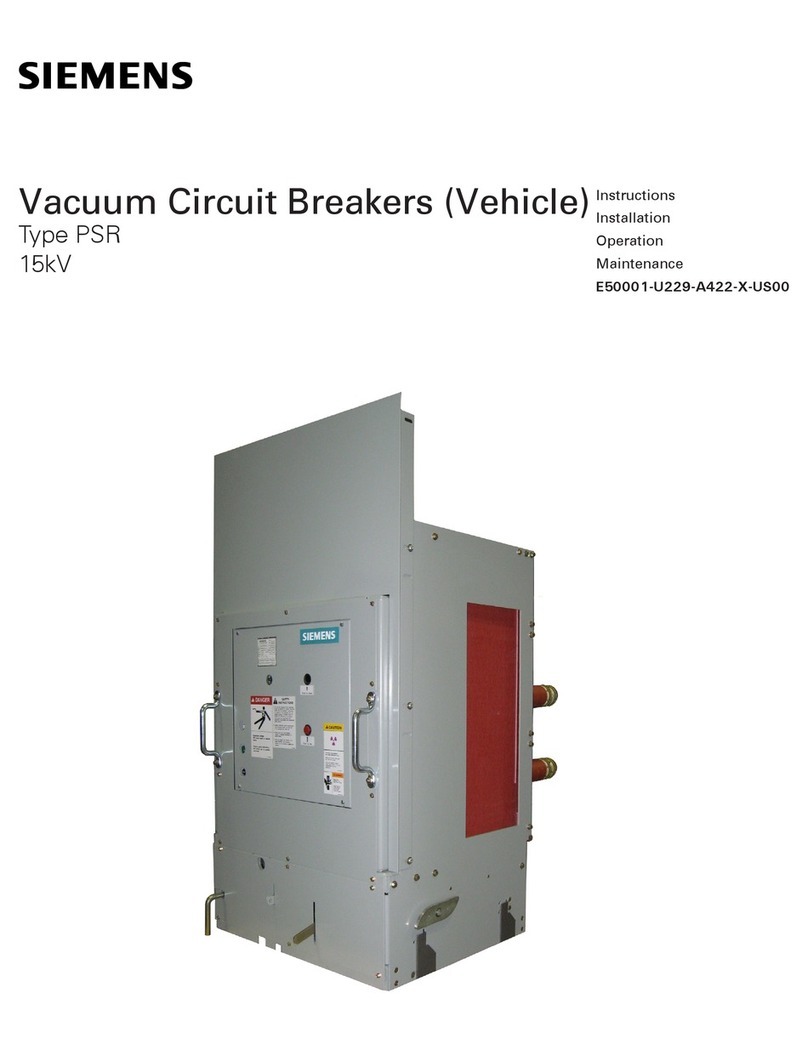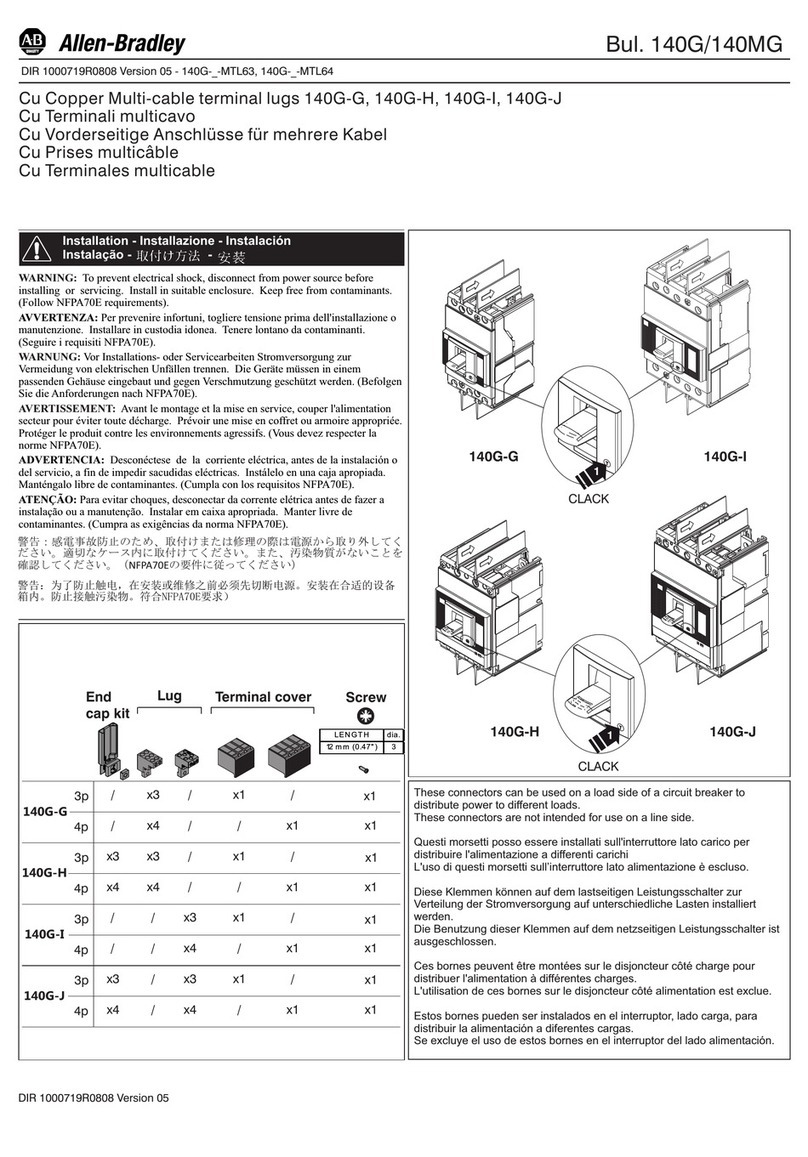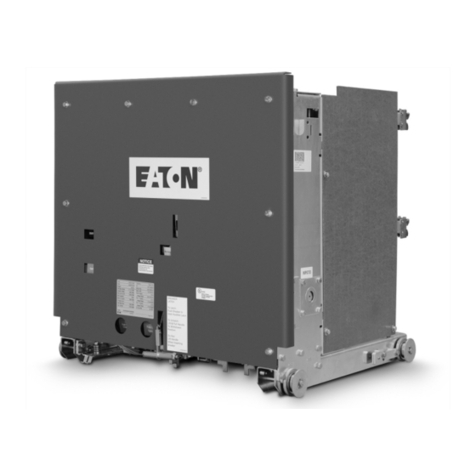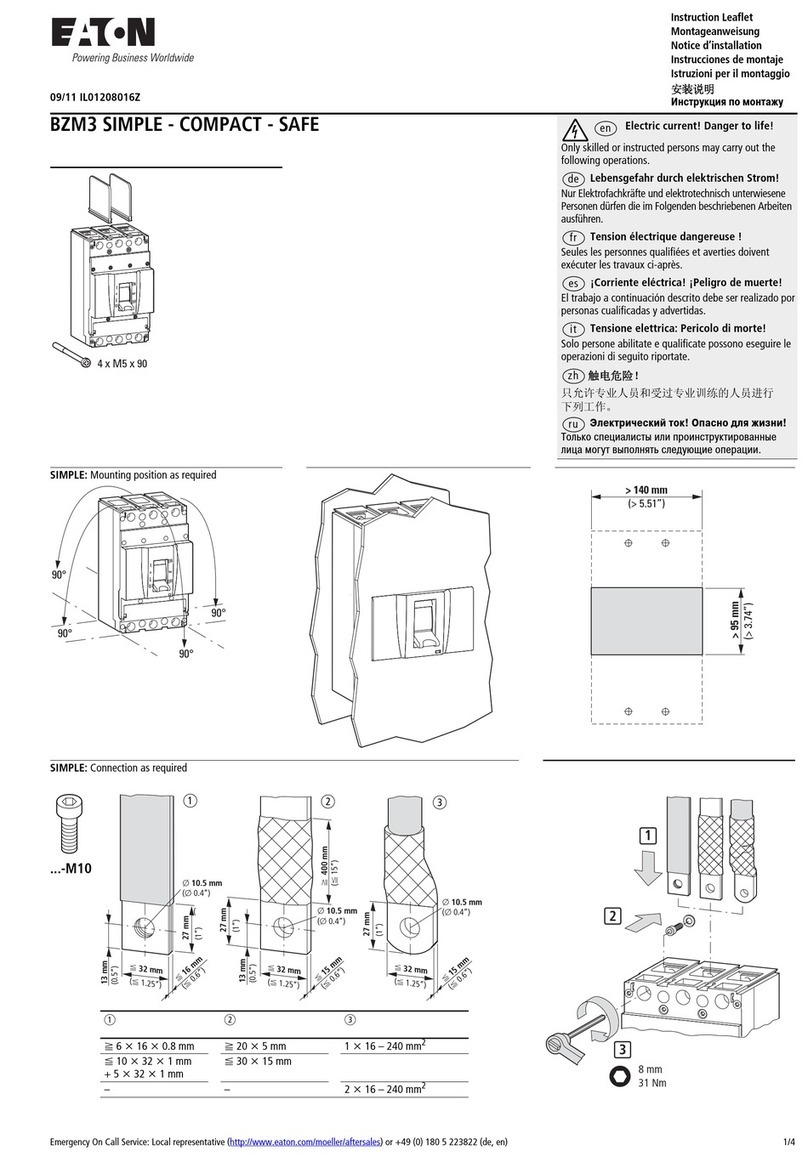
4Instruction Book IB182023EN March 2016 www.eaton.com
AMH-4.76-VR
Replacement Circuit Breaker
SECTION 1: INTRODUCTION
The purpose of this book is to provide instructions for receiving
and handling, storage, installation, operation and maintenance of
the General Electric type AMH-4.76 VR-Series circuit breaker. The
Vacuum Replacement Circuit Breakers (also referred to as VR-Series)
are designed to be used in existing AMH-4.76 metal-clad switchgear
and provide equal or superior electrical and mechanical performance
as compared to the design ratings of the original circuit breaker.
VR-Series Circuit Breakers provide reliable control, protection and
performance, with ease of handling and maintenance. Like ratings
are interchangeable with each other.
This book is intended to be used in conjunction with the technical
information provided with the original equipment order which
includes, but is not limited to electrical control schematics and wiring
diagrams, outline diagrams, installation plans, and procedures for
installation and maintenance of accessory items.
Satisfactory performance is dependant upon proper application,
correct installation, and adequate maintenance. It is strongly
recommended that this instruction book be carefully read and
followed in order to realize optimum performance and long useful life
of the circuit breaker.
1.1 VISUAL INSTRUCTION BOOKLET ESSENTIALS
Eaton provides additional documentation designed to enhance the
technical information provided in this instruction booklet for the
VR-Series circuit breakers. The Visual Instruction Booklet Essentials
(VIBE) is a digital supplemental booklet featuring user interactive
content and informative videos intended to assist with the
maintenance of the VR-Series circuit breaker. The VIBE document is
available for immediate download at www.eaton.com/VR-Series.
1.2 QUICK RESPONSE CODE
VR-Series circuit breakers have a quick response code (QR Code) on
the escutcheon of the circuit breaker cover. This QR Code is a matrix
barcode that provides direct access to download VR-Series specific
documentation, such as product instruction booklets and the VIBE
documentation. See Figure 1.1 for the featured VR-Series QR Code.
ote:N A smart phone with an adequate QR Code Scanner application must be
used. Downloading content may incur data charges from the mobile service
provider.
WARNING
SATISFACTORY PERFORMANCE OF THESE BREAKERS IS CONTINGENT
UPON PROPER APPLICATION, CORRECT INSTALLATION AND ADEQUATE
MAINTENANCE. THIS INSTRUCTION BOOK MUST BE CAREFULLY READ
AND FOLLOWED IN ORDER TO OBTAIN OPTIMUM PERFORMANCE
FOR LONG USEFUL LIFE OF THE CIRCUIT BREAKERS. IT IS FURTHER
RECOMMENDED THAT THE INSTALLATION BE PERFORMED BY A EATON
CORPORATION TRAINED ENGINEER OR TECHNICIAN.
VR-SERIES BREAKERS ARE PROTECTIVE DEVICES, AS SUCH, THEY ARE
MAXIMUM RATED DEVICES. THEREFORE, THEY SHOULD NOT UNDER ANY
CIRCUMSTANCE BE APPLIED OUTSIDE THEIR NAMEPLATE RATINGS.
ALL POSSIBLE CONTINGENCIES WHICH MIGHT ARISE DURING
INSTALLATION, OPERATION, OR MAINTENANCE, AND ALL DETAILS
AND VARIATIONS OF THIS EQUIPMENT ARE NOT COVERED BY THESE
INSTRUCTIONS. IF FURTHER INFORMATION IS DESIRED BY THE
PURCHASER REGARDING A PARTICULAR INSTALLATION, OPERATION, OR
MAINTENANCE OF THIS EQUIPMENT, THE LOCAL EATON REPRESENTATIVE
SHOULD BE CONTACTED.
1.3 AVAILABLE AMH-4.76-VR CIRCUIT BREAKERS
Refer to Table 1.
Table 1. AMH-4.76-VR Availability and Interchangeability
Breaker
Type
Nominal
Voltage
Class
(kV)
Existing
Breaker
MVA
Rating
Existing Breaker
Rated Continuous
Current at 60 Hz
(Amps)
MVA
Designation
of VR-Series
Breaker
Rated
Voltage
Factor
K
Rated Withstand ANSI Test Voltage Rated Short-Circuit
kA RMS at Rated
Max kV
Closing and Latching /
Momentary Capabilities
kA RMS/Peak
Low Freq.
kV RMS
Impulse
kV Crest
AMH-4.76-VR 4.16 250 1200 / 2000 250 1.24 19 60 29 58 / 97
4.16 250 1200 / 2000 250U 1.19 19 60 41 78 / 132
Figure 1.1. Quick Response Code
VR-Series QR Code
